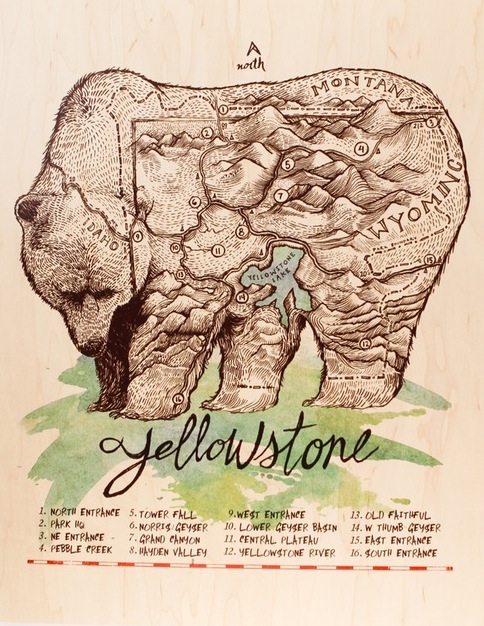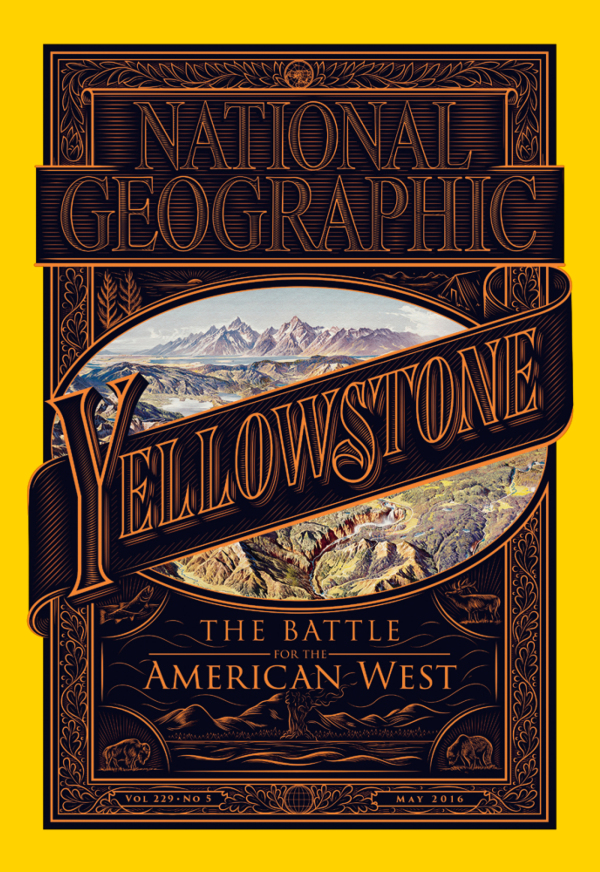FRESH AIR: Yellowstone National Park, a wilderness recreation area stretching for nearly 3,500 square miles atop a volcanic hot spot in Wyoming and parts of Montana and Idaho, may be in trouble. Each year, Yellowstone attracts millions of visitors and provides a home to countless animal species, including the once-threatened grizzly bear and bison. But finding the right balance between tourism and preservation can be tricky. Journalist David Quammen, who writes about the park in the May issue of National Geographic, warns Fresh Air’s Terry Gross that “there are ways in which Yellowstone is in danger of being loved to death.” Quammen says that so many tourists visit Yellowstone — close to 4 million each year — that it’s stressing the park’s ecosystem. But, he adds, the development of private lands around the park is an even greater threat. “[People] come and they buy a lot in a new subdivision, or they buy a ranchette, or they buy 100 acres or 300 acres, and they put up a cabin and they get a road and they get a satellite dish, and they get a dog and they turn what was wild landscape into human-occupied landscape,” Quammen says. “And that’s problematic for the bear, that’s problematic for the elk that migrate through these corridors.” Quammen notes that Yellowstone National Park is just one part of the Greater Yellowstone Ecosystem, a 22 million-acre area that also includes Grand Teton National Park, a portion of the Wind River Indian Reservation and other private and federally owned lands. Because the animals in Yellowstone need to migrate outside the park in the winter, the lands in the greater ecosystem play an important role in the park’s continued existence. “It has been realized in recent decades that Yellowstone Park is not an island, Quammen says. “It’s part of this larger system, this larger body of wild landscape, and it needs the rest of this wild landscape just as the rest of the wild landscape needs it.” MORE

DAVID QUAMMEN: There was a very important superintendent of Yellowstone, a man who was involved in the founding of the National Park Service itself, Horace Albright, and he became superintendent, which is the boss of Yellowstone Park, in 1919 … to 1929. … During that period Albright embraced the idea that in order for the national parks, and Yellowstone in particular, to have support from the American people and from politicians, there needed to be wildlife as spectacle. And for wildlife to be available as spectacle, Horace Albright said wildlife needs to be abundant and tame. So he sanctioned the idea that grizzly bears would be fed handouts from cars and would be allowed to eat garbage, essentially human food garbage, from the various hotels within Yellowstone National Park.
So there were these dumps near the big hotels … and the food garbage each day was put out there on these dumps and the grizzly bears were allowed, invited essentially, to come and feed at the dumps. At a certain point they decided this was great, this was the bears’ show, and they put up stands like bleachers around these natural amphitheaters at the dumpsites. So people would go out in the 1940s, the 1950s and even in the 1960s, you might finish your dinner at one of the hotels in Yellowstone and then you’d say, “Let’s go look at the bear show.” And you would go out to the dump, and you would sit in bleachers, and you would watch 12, 15, 18 grizzly bears — adult, dangerous, male, females with cubs — grizzly bears feeding on garbage. [After the garbage dumps were closed in the late ’60s] The grizzly bears were desperate for a few years, searching for substitutes for all this high-calorie human garbage that they had been eating. … It made it more dangerous for everybody. Closing the dumps brought on this crisis, and made things more dangerous. So in the years following the closure of the last dump, there was high mortality of grizzly bears. Why? Because they were frantic. … They were dazed and confused and desperate and hungry. So they came into campgrounds more, they tried to take food off of picnic tables, they tried to take food out of tents. They went places where they shouldn’t go and did things that they shouldn’t do, and they got in trouble, and quite a number of them got killed, and some people got hurt too. MORE

